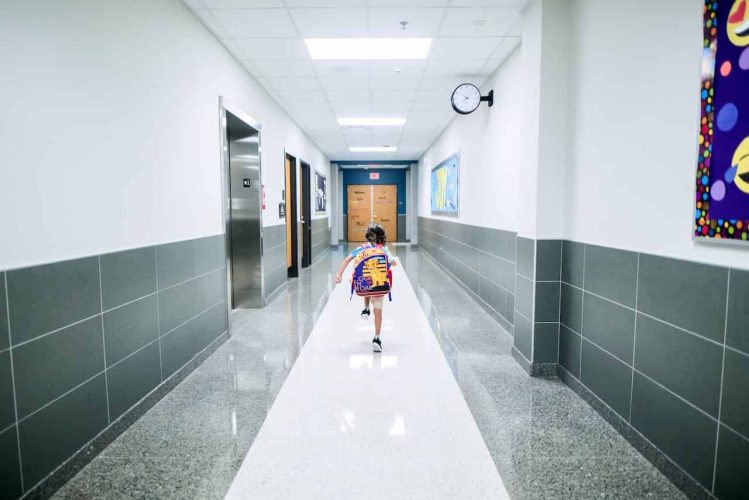Though cloud computing isn’t an entirely new concept, the adoption of modern cloud-based tools, devices and essential systems has begun to increase amongst K-12 educational facilities. Prior to the global pandemic, studies found that 52% of school institutions were operating some form of cloud-based learning management system (LMS), with 39% using the cloud to store curriculum content.
In the post-pandemic world, research indicates that online enrolment and cloud-based virtual learning systems have risen in usage by as much as 176%, illustrating just how commonplace cloud-based services and remote-access learning technology have become amongst the nation’s K-12 schools.
In ensuring the seamless provision of these cloud-based services, the implementation of Azure paired regions has emerged as a crucial factor. This is particularly true for maintaining data accessibility, redundancy, and resilience in the face of potential disruptions. For instance, if a natural disaster were to affect one region, the paired region is designed to maintain the availability of critical applications and data. As such, Azure paired regions enable schools to confidently rely on their cloud-based systems for efficient operation and continuity in learning, irrespective of unexpected circumstances.
Utilizing cloud-based technology isn’t only essential for providing remote students with a higher quality of personalized education, in fact, cloud services are currently being leveraged to drastically improve several school-based processes. Here’s how cloud services are revolutionizing education in the US.
Virtual classrooms and accessibility
Modern schools that utilize cloud computing and cloud-based management systems are able to provide both in-person and entirely remote students with bespoke virtual learning environments and classrooms in which they can collaborate and interact, allowing teaching staff to share high-quality resources and programs with rural students who may not previously have had access to these tools.
Students are also able to access course materials, additional educational resources and interactive learning aids using their own mobile devices from anywhere with an internet connection, providing students of all ages with a personalized and truly adaptive learning experience on their own terms.
In addition, cloud-based learning management systems allow students and staff to communicate in a safe and easily accessible environment, meaning students that may have questions about their work, a desire for information to be clarified or worries about school can seek support safely and efficiently.
Converged school security systems
Physical and cybersecurity will always be primary concerns in educational environments, teachers, IT staff and security teams must be able to ensure that all students are safe from physical threats and that all sensitive and identifiable personal information is appropriately secured from cyber-attacks.
The installation and operation of cloud-based management and file storage systems allows school security teams to develop converged security systems capable of detecting and responding to these incidents in a holistic manner. For example, on-site alarms, cameras and school safety door locks can be linked via a unified management portal, allowing all devices to be adjusted and viewed remotely.
Security and IT teams can also work together to develop automated alerts designed to warn staff of potential cyber or physical security breaches, with programmed automatic responses like lockdowns triggered by signals detected by connected IoT devices like on-site motion sensors or alarm systems.
Personalized learning and data analysis
By making use of connected cloud computing systems, teaching staff are able to monitor and record usable data pertaining to individual students as they complete tasks and move through curriculums. This information can then be analyzed and better understood by leveraging smart software tools to illustrate the unique learning patterns displayed by students, helping to develop targeted instructions.
Teachers can observe which learning styles resonate most with their students by viewing detailed metrics outlining how fast individuals completed certain assignments, and whether the resulting quality of work matches their expected performance. This information will be stored in cloud-based servers to be viewed and analyzed at any time to aid staff in creating personalized learning targets.
Detailed student analytics can also be visualized and used as a personalized learning aid to help students and their parents understand which specific skill sets could be improved upon, with these documents stored in a secure personal online account to be viewed remotely as and when needed.
Streamlined and simple scalability
Managing, maintaining and updating hardware and software systems in educational facilities can be an expensive and resource draining pursuit, especially during periods in which enrolment numbers are increasing and administrators are tasked with providing ample support for growing classes.
Schools that choose to install and operate cloud-based learning management systems, however, are able to avoid a large portion of these costs and logistics considerations as there will no longer be any need for expensive on-site servers and the size of file storage systems can be expanded on request.
Additionally, cloud-based servers will be regularly updated automatically by the school’s chosen service provider, allowing on-site security and IT teams to better manage their own workflows and divert limited resources towards more pressing matters such as physical and cybersecurity to make schools safer.
Conclusion
The continuing adoption and popularity of cloud-based learning management, storage and security systems is proving incredibly beneficial to educational facilities across the US. By choosing to utilize cloud-based tools, staff are able to provide remote students with higher quality resources, develop personalized learning programs, better understand students’ needs and improve security measures.
Integrated cloud computing also provides students and staff with a more convenient and efficient way to complete essential tasks and analyze important learning metrics, ultimately contributing to a more effective, adaptive and reliable way to support individual students and revolutionize K-12 education.

